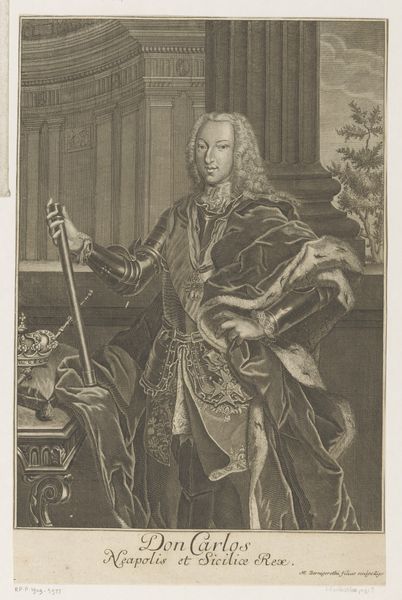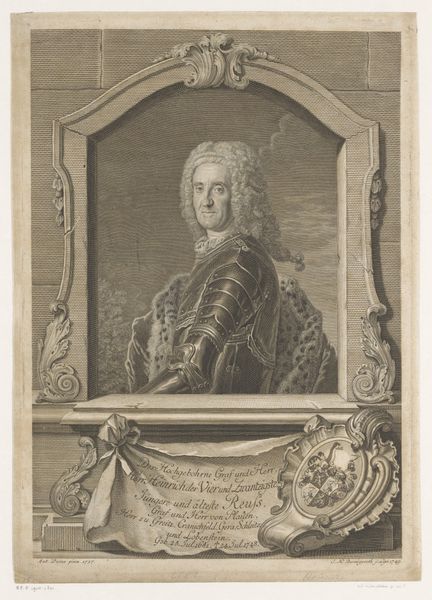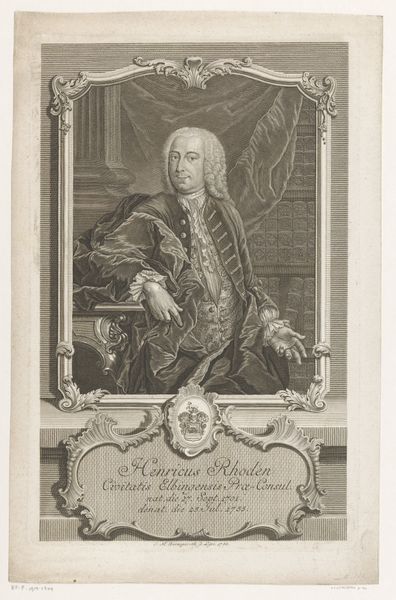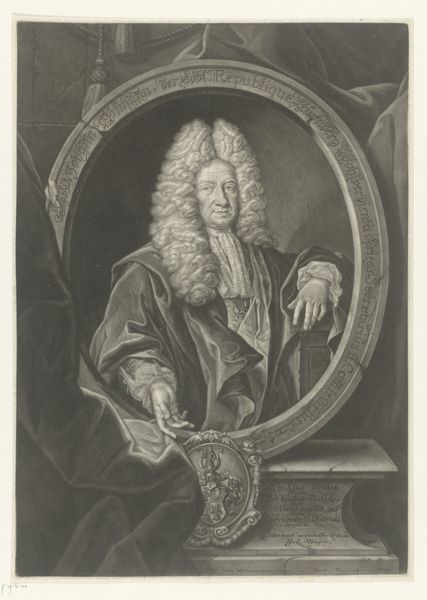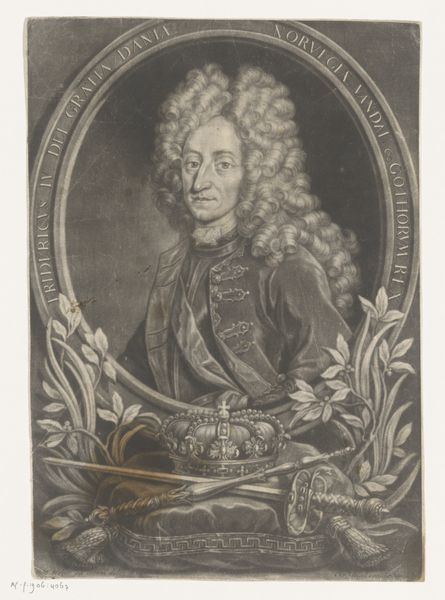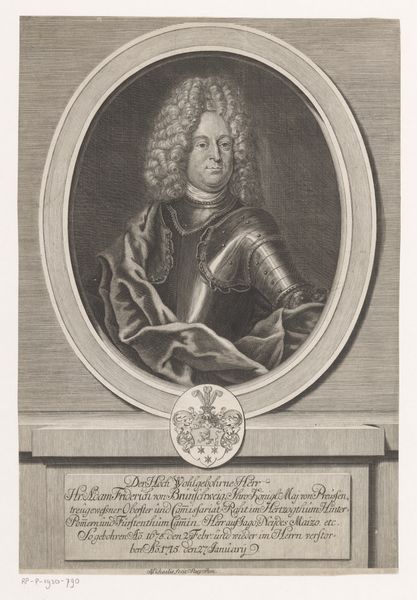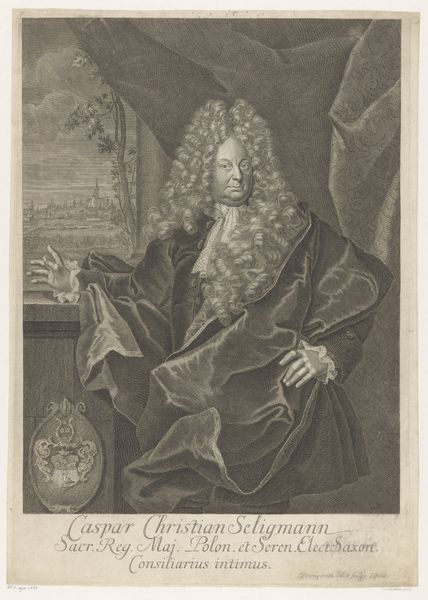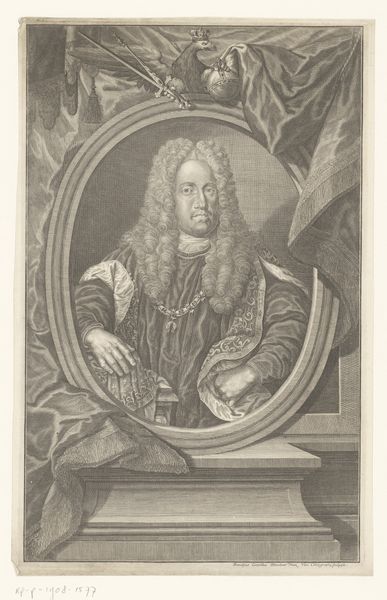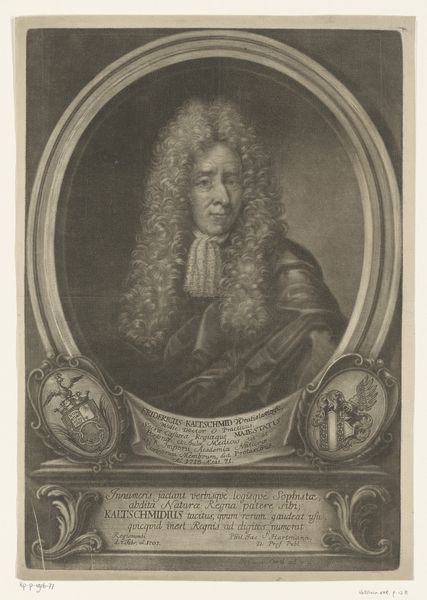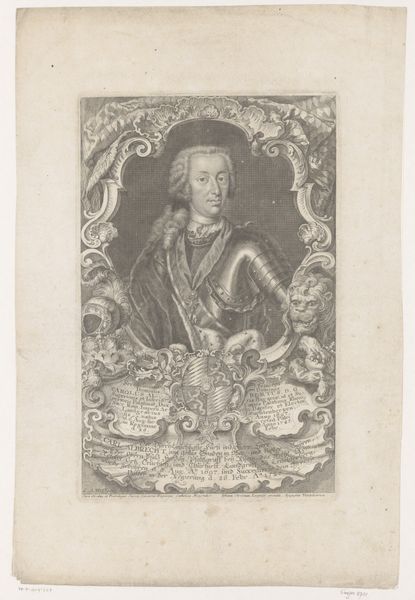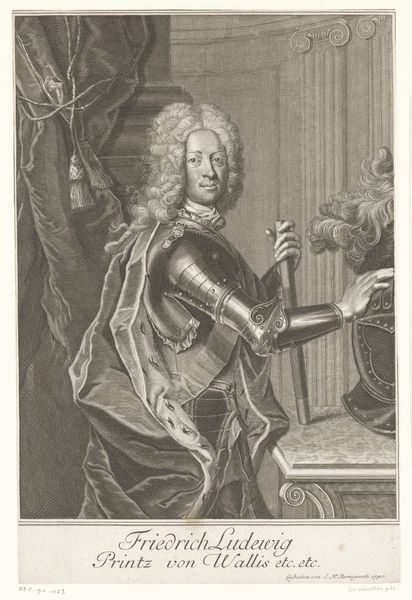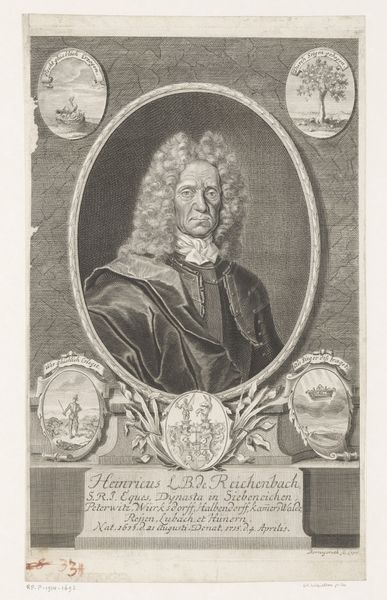
print, engraving
#
portrait
#
baroque
# print
#
old engraving style
#
classicism
#
history-painting
#
engraving
Dimensions: height 483 mm, width 330 mm
Copyright: Rijks Museum: Open Domain
Editor: This is "Portret van George II, koning van Groot-Brittannië," a print made by Johann Andreas Pfeffel sometime between 1727 and 1768. It has such an opulent, Baroque feel to it. What draws your attention when you look at this piece? Curator: I'm immediately struck by the engraving process itself. Think about the labour involved, the skill required to translate royal power into a reproducible image. Each line, each dot, carefully etched into the plate. This wasn't about singular artistic genius, but about a system of production and dissemination. Editor: That’s a great point, thinking about the work and process, it would take much skill. Did the choice of a print have some kind of connection with his political power? Curator: Absolutely. Consider the intended audience. Prints democratized portraiture, extending the King's image far beyond the court. How does the materiality of the print— the paper, the ink— impact its reception compared to, say, an oil painting intended for a wealthy patron? Editor: So, it's not just about WHAT is depicted, but HOW it's made, that carries meaning. And because of the labor that went into creating these detailed lines. Curator: Precisely. We're dealing with an early form of mass media, and understanding its material conditions offers invaluable insights into 18th-century social and political power structures. Editor: I hadn't considered it that way. Seeing it as a product of labour rather than solely an artistic representation really shifts my perspective. Thanks. Curator: Indeed, analyzing its production enables us to comprehend the consumption and influence of this kind of imagery in its time.
Comments
No comments
Be the first to comment and join the conversation on the ultimate creative platform.
